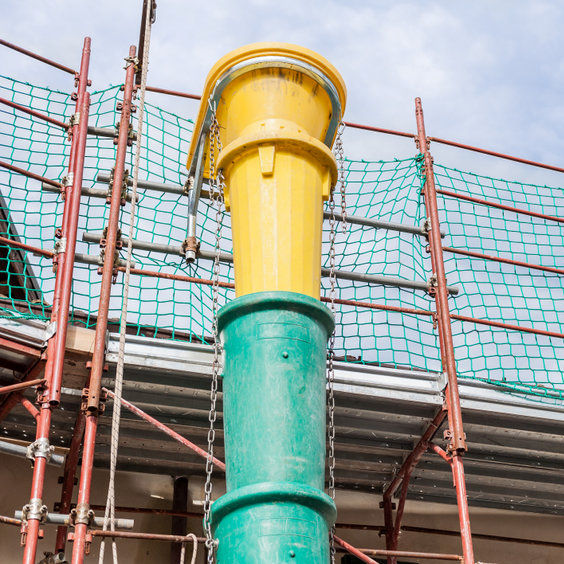17.A.07 Gates and switches.
- Power-positioned gate and switch sections must be provided with devices that will prevent these sections from falling in case of power failure.
- Means must be provided on all gates and switch sections to prevent conveyed material from discharging into the open area created by lifting of the gate or switch.
17.A.08 Counterweights.
- When counterweights are supported by belts, cables, chains, or similar means, the weights must be confined in an enclosure to prevent the presence of personnel beneath the counter-weight, or the arrangement must provide a means to restrain the falling weight in case of failure of the normal counterweight support.
- When counterweights are attached to lever arms they must be securely fastened.
17.A.09 When two or more conveying systems are interfaced, special attention must be given to the interfaced area to ensure the presence of adequate guarding and safety devices.
17.A.10 Hoppers and chutes.
- All openings to the hopper and chutes must be guarded to prevent persons from accidentally stepping into them. If guards are not practical, warning signs must be posted.
- Dump hoppers having the hopper flush with the floor and which by their use cannot be guarded must be equipped with grating having a maximum opening of 4 in (10 cm) and heavy enough to withstand any load which may be imposed on it. If the openings in the grating are larger or if no grating is provided, temporary railing must be placed around ground level hoppers when dumping operation are not in progress. During dumping operation, warning signs must be placed in conspicuous locations warning personnel of an open pit.
Knowledge Check Choose the best answer for the question.
17-4. If guards are not practical, what is the alternative method to prevent persons from stepping into hopper or chute openings?
You forgot to answer the question!

